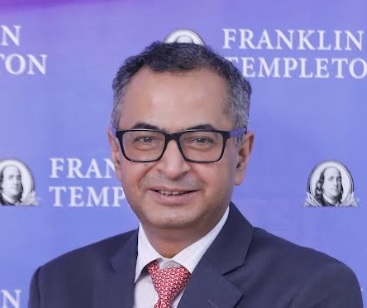Rural demand and urban spending will drive GDP growth in FY26

FinTech BizNews Service
Mumbai, April 9, 2025: The Monetary Policy Committee (MPC) held its 54th meeting from April 7 to 9, 2025 under the chairmanship of Shri Sanjay Malhotra, Governor, Reserve Bank of India. The MPC members Dr. Nagesh Kumar, Shri Saugata Bhattacharya, Prof. Ram Singh, Dr. Rajiv Ranjan, and Shri M. Rajeshwar Rao attended the meeting.
After assessing the current and evolving macroeconomic situation, the MPC unanimously voted to reduce the policy repo rate by 25 basis points to 6.00 per cent with immediate effect. The real GDP growth for 2025-26 is now projected at 6.5 per cent, with Q1 at 6.5 per cent; Q2 at 6.7 per cent; Q3 at 6.6 per cent; and Q4 at 6.3 per cent. The risks are evenly balanced.
Here are views of useful insights from Mutual Fund, Credit Rating Agency, Securities, brokerage houses & wealth management (WM), one of the "Big Four" accounting firm, on the MPC decisions:

Nilesh Shah, MD, Kotak Mahindra AMC
Nilesh Shah, MD, Kotak Mahindra AMC:
“The RBI has equipped the Indian Economy with helmet (liquidity) , Bat and other accessories (interest rate cut) and pep talk (change of stance to accommodation) so that it can play on a green top wicket in a cold and cloudy ( geo-economical and political environment) morning against the seaming, fast and unpredictable bowling of President Trump.
This is the best the coach can do. Now the players have to play it out so that we can score runs when the weather clears and pitch eases.”
Vikas Garg, Head of Fixed Income Invesco Mutual Fund:
“As dovish as it could be! The MPC delivers its second consecutive unanimous rate cut of 25 bps, in line with market expectations. Additionally, the stance has been revised to “Accommodative” from “Neutral,” exceeding market expectations. Clearly, the tone was set to provide growth support as confidence in inflation moderation increases. FY26 GDP and inflation have both been revised downwards by 20 bps, with inflation now expected to reach the RBI’s target of 4%. The commitment to provide adequate liquidity was reiterated. Overall, this policy is more dovish than previous ones, acknowledging growth concerns due to global turmoil and showing comfort with the inflation trajectory. Even as the MPC keeps a close eye on global developments, the mention of divergent monetary policies across countries, while factoring in domestic growth-inflation dynamics, provides room for further rate cuts. Markets have corrected to some extent, largely due to the hardening of global yields. However, favourable fiscal demand-supply conditions, further improving liquidity, and rate cut expectations will drive yields lower.”
Shrikant Chouhan, Head Equity Research, Kotak Securities:
The Reserve Bank of India (RBI) has cut the repo rate by 25 basis points to 6% and changed its stance to accommodative to support economic growth. This decision addresses growth concerns while keeping inflation under control. We expect the RBI to make additional cuts of 75 to 100 basis points, lowering the repo rate to between 5% and 5.25% by the end of FY26E.
The RBI’s unanimous vote to continue reducing rates shows its commitment to helping the economy. The Marginal Standing Facility (MSF) and Standard Deposit Facility (SDF) rates are now set at 6.25% and 5.75%, respectively. The RBI lowered its GDP growth estimate for FY26 to 6.5%. The GDP growth in FY26 is expected to be driven by an increase in rural demand and urban spending, despite challenges from global trade. The headline Consumer Price Index (CPI) estimate is now 4.0%, due to stable food prices and lower crude oil costs.
Looking ahead, we expect the RBI to continue cutting rates to support growth. The central bank will keep surplus liquidity in the banking system to ensure smooth policy transmission and aid in economic recovery.”

Piyush Baranwal, Sr. Fund Manager, WhiteOak Capital AMC
Piyush Baranwal, Sr. Fund Manager, WhiteOak Capital AMC:
“MPC today delivered a second rate cut in successive meeting while also finally changing the policy stance from neutral to accommodative, thus giving further clarity on the trajectory of rates going ahead. Continued tariff wars could diminish growth globally, India included. This may depress prices of goods impacted by tariff walls as well as prices of various commodities, causing India’s inflation to remain under check. Together, these open up room for further rate cuts from RBI to the tune of 50 bps in the coming months, though the same can change quickly on either side given the elevated uncertainty.
Pertinent to note here that current lower spreads for Indian G-Secs vs. the US treasury when compared to the past may not necessarily be an impediment in these spreads narrowing further. This is on account of the unique issues plaguing the US bonds such as elevated fiscal deficit, compounded by potentially diminished inclination of global central banks and other investors in buying US treasuries unlike in the past. This is due to the seemingly erratic behavior from the US government, which has upended the globally established norms of trade and investments for both friends and foes alike, causing anxiety in the minds of the global community.
Given the indications of continued policy easing and comfortable liquidity from RBI, we believe longer duration bonds as well as spread assets should likely outperform going forward. “

Mahendra Kumar Jajoo, CIO – Fixed Income, Mirae Asset Investment Managers (India)
Mahendra Kumar Jajoo, CIO – Fixed Income, Mirae Asset Investment Managers (India):
“RBI cut the key policy rate by 25 bps as also switched to an accommodative stance. This clears the runway for continued positive momentum in fixed income markets. While the risk of a global disruption remains in view of the ongoing developments on tariffs, the guidance is for further cuts in forthcoming policies. Bond yields remained slightly higher immediately after policy announcement as the rates have eased significantly in the prelude but are expected to continue to soften going forward. It would seem that in the current environment of uncertainty, the central bank is going to do the heavy lifting yet again, as it did during Covid disruption. That suggests a supportive environment for fixed income in the immediate term.”
AM Karthik, Senior Vice President & Co-Group Head, Financial Sector Ratings, Credit Rating Agency ICRA:
NBFCs
"The Draft guidelines on gold loans provides improved clarity on the applicable LTV for the lenders. The cap in the LTV at 75%, on an on-going basis, through the tenor for gold loans extended for consumption purposes, and for the gold loans by NBFCs, which could have some near-term impact on their growth. The additional provision of 1% in case of breach in LTV, should however be managable for large NBFCs operating in this segment, considering their overall business yeild and healthy earnings performance. Notwithstanding the above, the impact of the evolving competitive environment in view of the new harmonised regulations on NBFCs performance shall remain a monitorable
If the end use is for income generation, lenders (excluding NBFCs) can prescribe an LTV ratio as part of their policy, however additional due diligence including borrower cash flow assessment and primary security creation process could be operationally onerous."
How it impacts the Gold Loan segment
While we await the details, guidelines to harmonise gold loan practices across lenders augurs well for the segment, given the sharp growth in loan book driven by the gold prices and favourable demand dynamics, as unsecured and personal credit slowed since H2FY2024. With the elevated gold prices at present and the currently favourable risk profiles of the NBFCs in this space, considering the liquid nature of the security, the near-term impact on account of regulatory tightening should be manageable. However, competitive pressures for NBFCs could increase going forward, which remains monitorable.
What’s in it for Mid and Small sized NBFCs?
While we await the details, comprehensive guidelines on co-lending arrangements, covering all regulated entities, shall favourably support NBFC AUM growth and also aid in enhancing formal credit penetration. Mid and small sized NBFCs, can use this avenue to augment their loan books with non-PSL loans also becoming eligible, even as the funding from the conventional channel remain less accessible at present. Larger NBFCs could use this route to diversify their product profile and expand their borrower segments.
Credit enhancements guidelines and its impact
Anil Gupta, SVP & Co-Group Head - Financial Sector Ratings
While we await the revised draft, it is good that the RBI is revisiting the partial credit enhancement guidelines as the segment did not scale up given the restrictions in existing guidelines. Some of the challenges included the capping of the partial credit enhancement only 20% of bond issue though capital requirements were significantly higher in relation to the guarantee provided and limited / back-ended amortization of credit enhancement resulting in guarantee fees outweighing the benefits of cost reduction upon rating enhancement.
On Overall MPC policy:
Aditi Nayar, Chief Economist and Head - Research & Outreach, ICRA ltd.
"The 25 bps cut in the repo rate was along expected lines, given the recent evolution of growth inflation dynamics. Given the burgeoning global uncertainty, the reduction in the MPC's FY2026 forecasts for both the CPI inflation and GDP growth by 20 bps each and the change in stance to accommodative, amidst the clarity that it signals the future rate and not liquidity trajectory, we now expect an additional 50 bps of rate cuts over the next 3 policy reviews."
360 ONE Asset (wealth and asset management firm):
The RBI Monetary Policy Committee (MPC) unanimously decides to reduce the policy repo rate by 25 basis points from 6.25% to 6.00%. The MPC also changed the policy stance to ‘accommodative’ from ‘neutral’.
· Moderate growth and a benign inflation outlook allow for a rate cut in the April 2025 policy.
· The RBI projects FY26 CPI inflation at 4.0% YoY. Positives – sharp decline in inflation expectations, fall in crude oil prices. Negatives – adverse weather events, global uncertainties.
· The RBI projects FY26 GDP growth at 6.5% YoY. Positives – agricultural prospects appear bright, industrial activity continues to recover, services are expected to be resilient. Negative – global trade disruptions
· We expect the RBI to maintain surplus liquidity conditions to improve the transmission of rate cuts to credit and deposit markets.
· We expect the RBI to cut rates by another 25 bps in the June 2025 policy.

Rahul Goswami, CIO & MD, India Fixed Income, Franklin Templeton
Rahul Goswami, CIO & MD, India Fixed Income, Franklin Templeton:
“The Monetary Policy Committee's (MPC) decision to reduce the policy rate by 25 basis points, from 6.25% to 6%, was largely in line with market expectations. The RBI lowered the growth forecast to 6.50% and inflation to 4.00% for FY2026. The RBI importantly changed the stance on monetary policy to ‘accommodative’, taking comfort from continued disinflation from food, oil and commodities, lending continuity to monetary policy actions from the RBI. Considering the benign inflation outlook, the interest rates even after today’s cut are in neutral territory. The rate cut could be conducive to the growth dynamics with RBI’s intent of ensuring credit flow to the productive sectors in the economy. The RBI action is consistent with the Government of India’s efforts and emphasis to support growth. We feel the RBI has done a fine balancing act of managing growth inflation dynamics in the current economic environment loaded with global uncertainties.”
Siddharth Chaudhary, Senior Fund Manager - Fixed Income, Bajaj Finserv AMC:
“MPC has delivered almost everything that was anticipated by the market. A 25 bps rate cut and change of policy stance to accommodative are welcome steps. FY 25 growth and inflation projection have been revised downwards by 20 bps to 6.5% and 4%, respectively. Dissipating food inflation, falling crude and uncertainty related to global growth environment seem to have led to this decision. On liquidity though, there is no fresh announcement but there is an assurance on liquidity provision as and when required.”
Deepak Agrawal, CIO-Debt, Kotak Mahindra AMC:
Given the changing world order, with significant tariff imposition by US, global growth is likely to be impacted which may have impact on Indian growth also. RBI has moderated its GDP growth projection for FY2025-26 by 20 bps to 6.50%, similarly moderated its headline inflation projection to 4.00% (vs previously 4.20%). Keeping this growth-inflation dynamic in mind, Monetary Policy Committee (MCPC) of RBI has decided to further cut the repo rate by 25 bps to 6% and change the stance to accommodative from neutral, indicating RBI will support the growth in this global uncertain times. We expect further 50 bps rate cut in next six months by RBI.
DK Srivastava, Chief Policy Advisor, EY India (multinational professional services firm, One of the "Big Four" accounting firms):
"RBI’s second successive reduction of policy rate of 25 basis points and change of stance to accommodative, signals its willingness to safeguard India’s GDP growth prospects, ensuring that it does not fall below 6.5% inspite of the ongoing global tariff turmoil. The RBI recognises that global uncertainties will have an adverse impact on India’s growth prospects. However, a periodic injection of monetary stimulus supported by maintenance of adequate liquidity conditions and healthy domestic economic conditions including robust agricultural prospects will help India maintain a reasonably high GDP growth in the presence of a likely global growth slowdown. The expectation is that RBI will continue the downward rate cycle by reducing the repo rate all the way to 5.25% by successive reductions of 25 basis points each in the next three rounds. The RBI has indicated its exchange rate assumption of INR86/US$, on average, for 2025-26 inspite of the likely depreciation of many other currencies. Both growth and inflation prospects in India will be helped by a downward movement of global crude prices which will reduce costs in India and make it a relatively more attractive investment destination. Fiscal authorities should now ensure a complementary stimulus by continuing to invest in infrastructure."